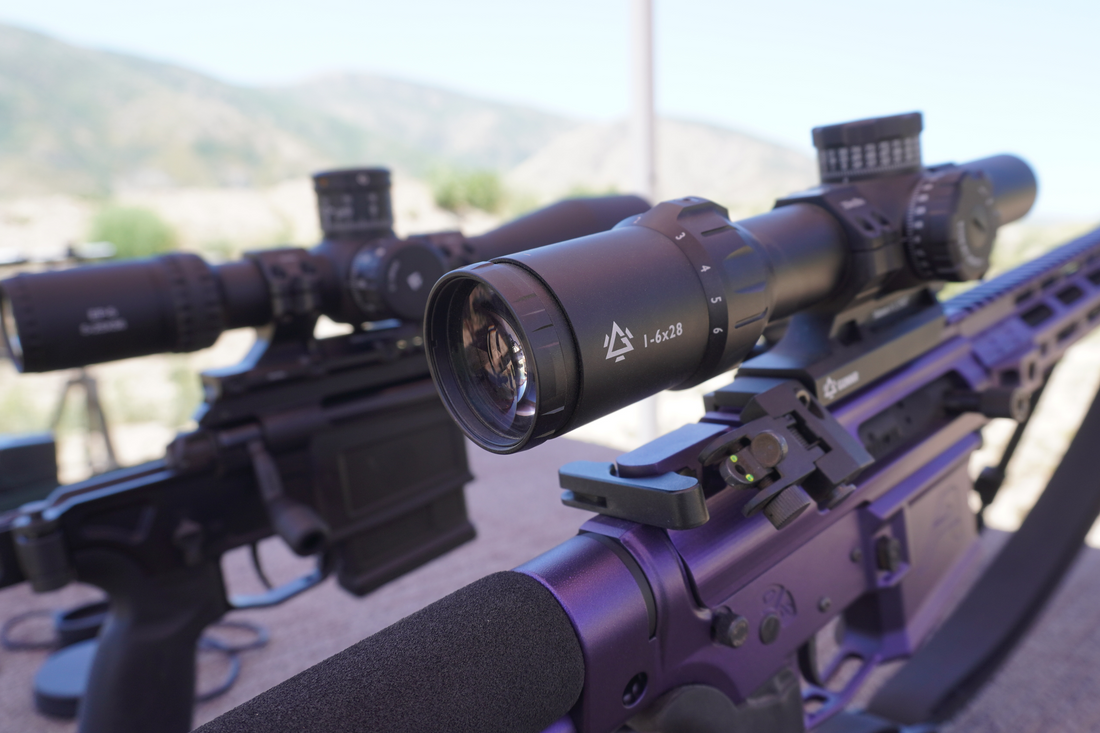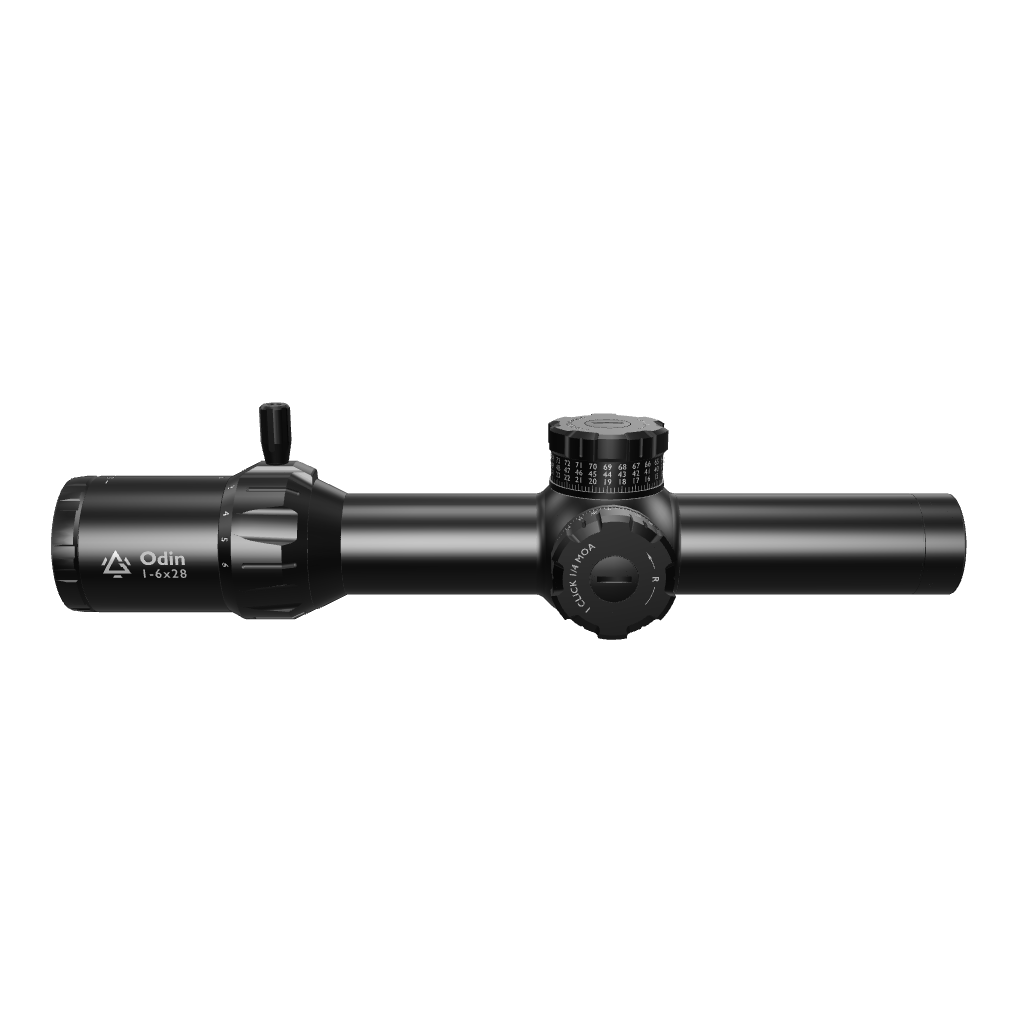Focal Plane in Rifle Scopes: FFP vs. SFP Explained
Focal plane can be a complicated concept, especially in rifle optics. When you go shopping for a rifle scope, you will definitely come across terms like First Focal Plane (FFP) and Second Focal Plane (SFP). These sound technical, and they are, but understanding what they mean can be the difference between buying the right optic for your shooting style and wasting money on features you won’t use.
In this article, we’ll break down:
- What does focal plane mean in rifle scopes
- How focal plane works differently in rifle scopes than in camera lenses and telescopes
- The pros and cons of FFP and SFP
- Which types of optics benefit most from each type
- And when an LPVO should actually be FFP
Let’s dive in.

What Is Focal Plane in Rifle Scopes?
In simple terms, the focal plane in a rifle scope refers to where the reticle is positioned inside the optic’s internal lens system.
- When the reticle is placed in front of the magnification lenses, it is a First Focal Plane optic.
- When the reticle is placed behind the magnification lenses, you are looking at a Second Focal Plane (SFP) optic.
How Does Focal Plane in a Rifle Scope Work?
The type of focal plane in an optic (FFP or SFP) affects how the reticle behaves when you zoom in and out. And that, in turn, affects how you range targets, hold for wind, and dial for elevation.
Here’s a closer look at the two main types:
1. First Focal Plane (FFP)
- The reticle sits in front of the magnification lenses.
- When you zoom in, the reticle grows larger; when you zoom out, it shrinks.
- Why that matters: Your holdover and ranging marks (subtensions) stay accurate at all magnification levels.
So if your reticle shows a 1 MIL mark, that’s always 1 MIL—whether you’re at 4x or 20x.
Explore first focal plane reticles in more detail
2. Second Focal Plane (SFP)
- The reticle sits behind the magnification lenses.
- The reticle stays the same size no matter how much you zoom.
- But: The subtensions are only accurate at one magnification setting, typically the highest (e.g., 10x on a 2–10x scope).
So if you’re shooting at 4x, the reticle’s hash marks may no longer represent true ballistic values.
How Is Focal Plane in Rifle Scopes Different from Camera Lenses or Telescopes?
The main difference between “focal plane” in optics and “focal plane” in other optical devices like cameras and telescopes is this: only in rifle scopes does the focal plane control how useful your reticle is across variable zoom ranges.
- Telescopes don’t have reticles or magnification changes. The focal plane is simply where the image forms—there’s no user interface (like hash marks) that interacts with it.
- Camera lenses don’t use reticles or subtensions like scopes. But just like rifle scopes, precision in placing the focal plane is key to sharp, accurate imagery.
- In rifle scopes, the focal plane determines how the reticle scales in relation to magnification, which directly affects your ability to shoot accurately at different distances.
FFP vs. SFP: Which One Should You Choose?
Shooters have expressed diverse opinions on the issue of FFP vs SFP reticles, but it all comes down to this:
- SFP is preferable for short to mid-range shooting and hunting, where you are mostly working at one magnification level.
- FFP is preferable for dialing and ranging at variable magnification. The wider the magnification range you are shooting at, the more suitable FFP becomes.
This becomes self-evident when you look at the pros and cons of FFP and SFP optics
First Focal Plane (FFP): Pros
- Reticle subtensions are always accurate.
- Perfect for dialing and ranging at variable zoom.
- Preferred by tactical, PRS, and long-range shooters.
FFP: Cons
- The reticle can look tiny at low magnification—hard to read in low light or CQB.
- Usually, they are more expensive.
Second Focal Plane (SFP): Pros
- The reticle always looks the same, clear, readable, and fast.
- Great for short to mid-range shooting and hunting.
- Usually more affordable.
SFP: Cons
- Holdovers and ranging only work at one magnification (usually at min zoom).
- It can cause missed shots if you misjudge the zoom when using hash marks.
Explore the broader conversation on FFP vs SFP
FFP vs SFP for LPVOs, MPVO, and HPVOs
Let’s say you are in the market for an LPVO, MPVO, or an HPVO: should you go for an FFP or an SFP scope? Now let’s break it down by scope category.
LPVO (Low Power Variable Optic: 1–4x, 1–6x, 1–10x)
Objectively speaking, there is no better option when it comes to reticle type for LPVOs. Whether you should go FFP or SFP depends on what you are using the rifle scope for.
- If you mainly shoot at a low magnification range (1- 4x), SFP might be preferable: it stays large and visible, ideal for fast, close-range shooting.
- If you’re using your LPVO as a Designated Marksman Rifle (DMR), engaging targets at 400–600+ yards. FFP ensures your reticle holds and MIL/MOA readings stay accurate across all zoom levels.
If you’re treating your LPVO as a tactical or long-range hybrid scope, FFP can be useful. Otherwise, stick with SFP for faster, more intuitive shooting.
MPVO (Mid Power Variable Optic: 3–15x, 2.5–20x)
For an MPVO, the best option is FFP reticles.
- These scopes are made for shooting at mixed distances.
- Reticle consistency across zoom levels is critical for accurate holdovers and ranging.
- Ideal for PRS shooters, tactical use, or hunting in variable terrain.
HPVO (High Power Variable Optic: 5–25x, 6–36x)
For high-power variable scopes, FFP is unquestionably better than SFP. Here’s why:
- You’ll be zooming in and out a lot depending on visibility and wind.
- You need a reticle that always gives you consistent values.
- Nearly all professional-grade long-range scopes today are FFP for this reason.
When Is FFP the Right Choice for an LPVO?
FFP in an LPVO makes sense if:
- You shoot at distances beyond 300–400 yards.
- You need to range targets or use precise MIL/MOA holds at various magnifications.
- You don’t mind a slightly smaller reticle at 1x in exchange for reticle consistency at 10x.
Recommended FFP LPVOs
Final Thoughts
The focal plane isn’t just a technical detail—it’s a foundational part of how your scope behaves. It affects speed, accuracy, confidence, and how well your optic supports your shooting style.
Here’s a quick recap:
- FFP is for flexibility—accurate ranging and reticle data at any zoom.
- SFP is for speed and simplicity—ideal when you’re not relying heavily on hash marks.
- LPVOs can go either way, depending on the use case.
- MPVOs and HPVOs should almost always be FFP.
Choosing the right focal plane is about understanding how you shoot and what kind of feedback you need from your optic. The more variable your distances and engagements, the more likely you’ll benefit from FFP.
Here’s an LPVO buying guide to help you make your decision.







